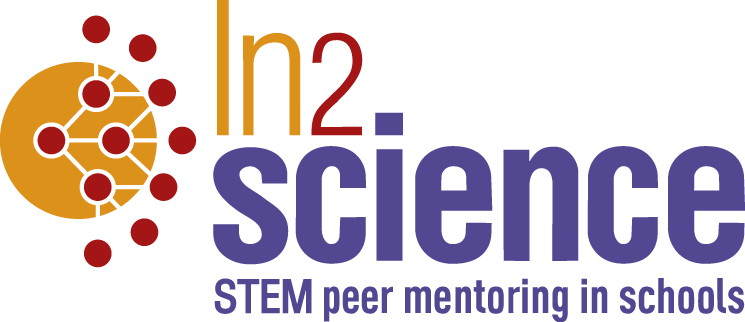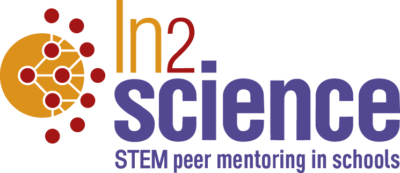On Thursday 13 September 2018, In2science will host a free forum on industry-school partnerships in STEM education. We invite you to join us to hear from leaders in industry, education and government, and to share your ideas and experiences.
In this article, we explore the emergence of such partnerships as a priority in STEM education policy and the benefits that they can provide to schools, students and industry alike.
STEM education and the needs of the future workforce
The importance of STEM education for securing Australia’s economic future is increasingly apparent. A 1% shift of Australia’s workforce into STEM roles including health, agriculture, and information technology will add a predicted $57.4 billion to Australia’s GDP over 20 years (PwC, 2015). More broadly, equipping young people with skills such as critical, creative and analytical thinking, problem-solving, evidence-based reasoning and digital literacy, and capabilities such as collaboration, empathy and resilience, will set them up to thrive in STEM-reliant future workplaces and drive economic growth.
However, engagement and achievement in STEM subjects in schools have declined over recent decades and there is a career skills gap emerging for our future workforce. Given that STEM skills are critical for careers across almost every sector and industry, addressing this gap has become a top priority for Australian educators and policy makers.
The growing importance of industry-school partnerships
Strategies that help students to effectively transfer STEM skills and capabilities from classrooms into workplaces are still being established. An important pillar of new approaches to this challenge is that the development of workforce-aligned STEM skills cannot happen solely through traditionally-structured science and mathematics lessons in schools.
Instead, a consensus is emerging that connecting students with industry experiences should be an integral part of the school STEM education pipeline, as an important step in supporting student success in post-school education and beyond.
One way to foster these skills and capabilities, and to reach students from disadvantaged schools, is to support closer collaborations between schools and STEM industry. Schools play a pivotal role in preparing their students for the workplace. Industry partnership programs can help them to achieve this outcome in a unique and flexible way.
Industry-school partnerships: benefits and best practice
Two recent reports have shone light on the wide variety of benefits industry-school partnerships can offer and examined both best practices strategies and challenges around their implementation.
In April 2018, the Education Council conducted extensive consultations with industry and education leaders to provide recommendations on the role of school-industry partners for its National STEM School Education Strategy. In the report, “Optimising STEM Industry-School Partnerships”, Australia’s Chief Scientist and In2science Patron Dr. Alan Finkel AO writes that:
In July 2018, the Mitchell Institute published its findings on the current state of play of STEM industry-school partnerships, across policy, research and practice. The report, “Connecting the worlds of learning and work”, affirmed that industry-school partnerships can help students transition from schools to careers, help industry to engage with future employees and grow Australia’s STEM workforce, and help schools to bring innovative teaching and learning opportunities to their community. It noted that many industry-schools partnerships exist across the country and may involve industry site visits, work experience placements, workshops, career expos, industry-based project work, and much more.
Copyright Mitchell Institute, shared with kind permission.
However, current partnerships between schools and industry in Australia face a number of hurdles and challenges. Many run on an ad-hoc basis and do not often reach students with the greatest need for exposure to the world of work. Additionally, students likely to benefit the most from exposure to the world of work are missing out. Learners from disadvantaged backgrounds, or rural and regional areas, have limited access to industry-school programs like work experience, due to either location, or lack of connections and career information.
In2science Industry-Schools Partnerships Forum
To discuss goals, ideas, and best practice for STEM industry-schools partnership programs, In2science is hosting a panel discussion and forum on Thursday 13 September 2018, 4:30 – 6:30pm, at The University of Melbourne. The forum will be a chance to hear from professionals working to connect young people with STEM career skills and share your own experiences.
Speakers and panellists for the evening include:
- Keynote: Sally-Ann Williams, Engineering Community and Outreach Manager at Google Australia
- Dr. Amanda Caples, Victoria’s Lead Scientist
- Felicity Furey, Swinburne University of Technology; co-founder of Power of Engineering and Machinam
- Troy Waller, Learning Delivery Specialist at Microsoft
- Kate Torii, Policy Fellow at the Mitchell Institute and author of the report “Connecting the worlds of learning and work” (cited above)
- Dr Linda McIver, Founder and Executive Director, Australian Data Science Education Institute; Superstars of STEM
All members of the STEM education community, including teachers, industry professionals, In2science mentors, students and parents are all welcome to come along to share ideas and network with others passionate about improving STEM employment opportunities for the next generation.
The event will also be live-streamed via the In2science Facebook page for those in regional and rural areas, or anyone that can’t be at the venue on the night.
Please join us at the Industry-Schools Partnerships Forum by registering (free) here.




